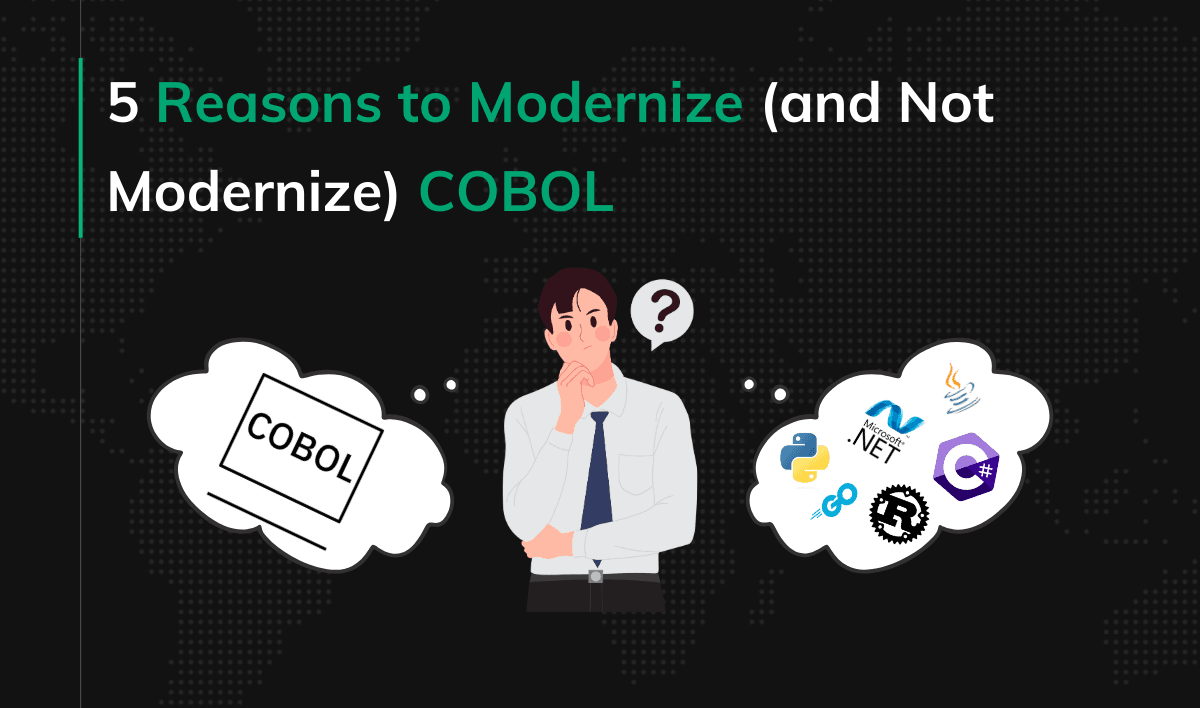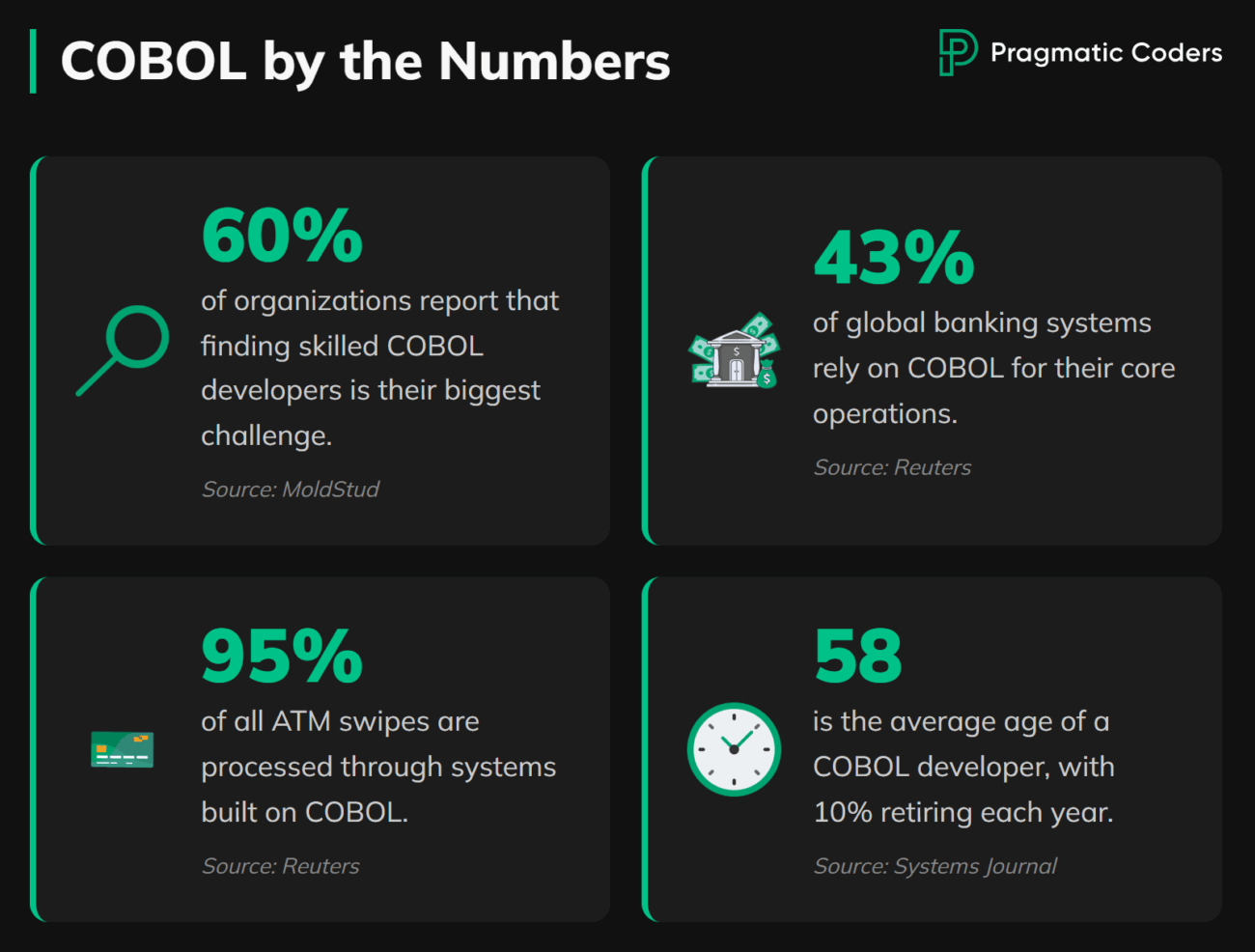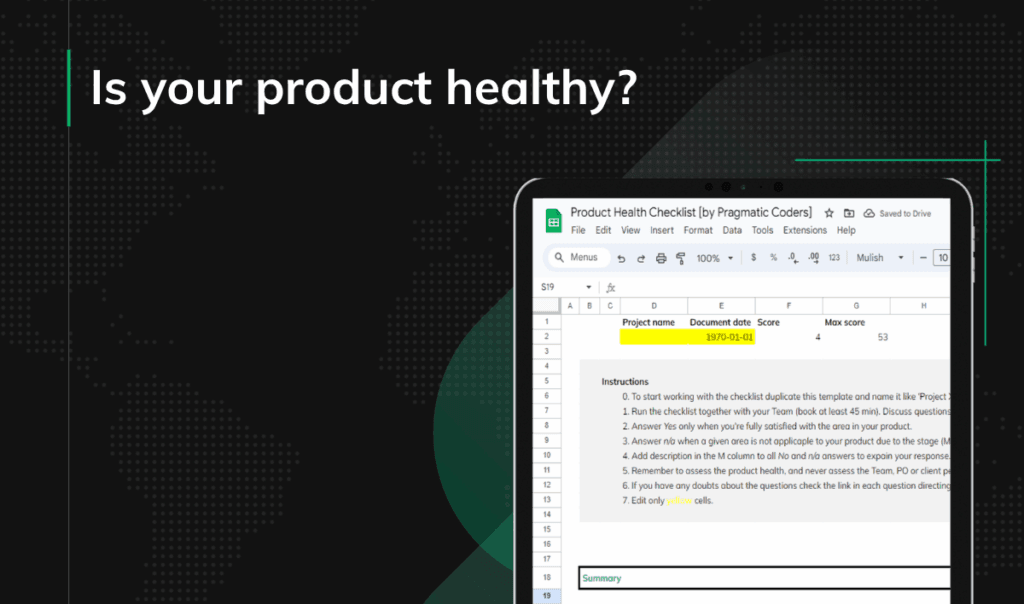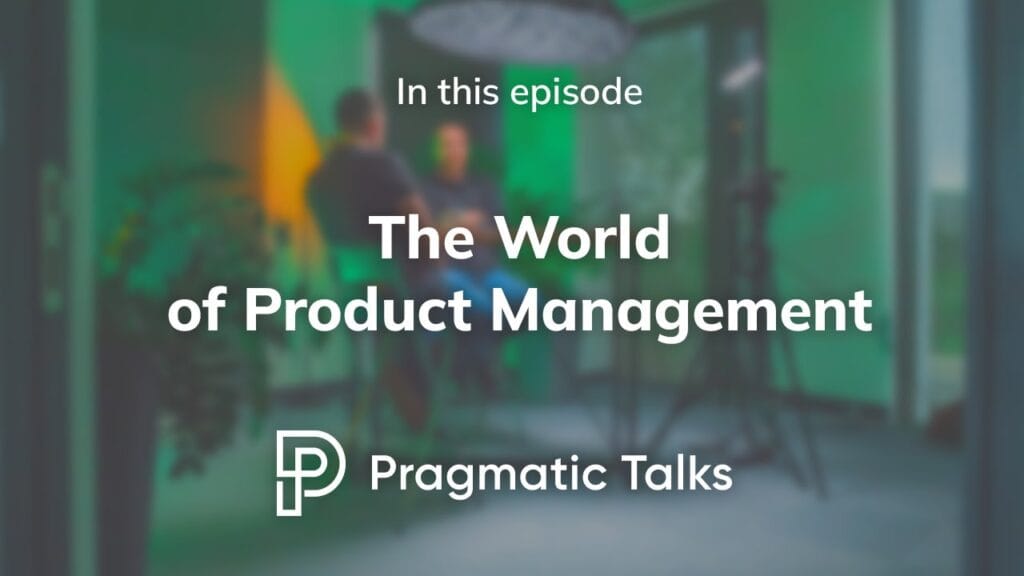5 Reasons to Modernize (and Not Modernize) COBOL

Banks still run on COBOL (43% of them!). It powers card networks, core ledgers, and batch jobs that move trillions. As much as 95% of ATM card swipes flow through COBOL‑based systems, and an estimated 220 billion lines of COBOL remain in production. That stability is why many teams keep it. Profit and risk drive these choices. If a system is stable and cost effective, banks don’t fix what isn’t broken. They modernize when doing so advances clear business goals and measurable outcomes. Institutions preserve workloads that still win on throughput, stability, or cost per transaction. How long can a bank wait before legacy code really starts hurting the bottom line?
In this article, I’ll cover five reasons to modernize COBOL, five reasons to hold, the key trade‑offs, and a pragmatic path forward.
Key Points
|
Five Reasons to Modernize COBOL Now
Reduce Talent Risk and Preserve Institutional Knowledge
Most COBOL experts are nearing retirement. The workforce is aging: average age is 58 and about 10% retire each year. That creates a fragile dependency on a shrinking group of specialists. Modernizing codifies decades of tacit knowledge into well‑documented, testable systems that a broader talent pool can maintain. Start by capturing business rules with subject matter experts. Mine scheduler graphs and Job Control Language (JCL) for hidden logic. Turn implicit data and process contracts into clear, written interfaces.
Lower Long‑Term COBOL Maintenance and Operational Costs
Mainframes excel at vertical throughput but can be expensive to scale and operate. After the initial investment, modern systems often reduce total cost of ownership:
- Less vendor lock‑in
- Managed services instead of bespoke tooling
- Automation across build, test, and deploy
Consolidate duplicative jobs, shrink batch windows, and shift predictable workloads to more cost‑efficient platforms where appropriate.
Increase Agility and Delivery Speed
Modern architectures let you ship smaller, safer changes faster. CI/CD, feature flags, and automated testing reduce release risk. Domain‑aligned services and clear boundaries decouple teams so they can deliver independently. Faster feedback loops unlock product experiments that are impractical in monolithic batch‑oriented systems.
Enable Omni‑Channel Banking Integration With Standard APIs
You need to expose reliable capabilities to mobile, web, partners, and internal teams. API‑first and event‑driven interfaces turn core functions into reusable building blocks. Replace brittle file drops and ad‑hoc feeds with versioned contracts, SLAs, and observability so consumers can integrate quickly and safely.
Strengthen Security, Compliance, and Auditability
Modern identity and secrets management bring least‑privilege access, regular key rotation, and strong encryption. End‑to‑end traceability (data lineage, tamper‑evident logs, and controls‑as‑code) reduces drift and speeds audits. These gains matter most when regulatory change is frequent and evidence must be produced on demand.
Five Reasons Not to Modernize COBOL (Yet)
Delay COBOL Modernization If Upfront Cost and Timelines Dominate ROI
Modernization is a multi‑year investment. If you can’t articulate a break‑even point tied to concrete outcomes, you risk building an expensive parallel system. The scope is large: 70% of banks globally still rely on legacy systems, so sequencing and timing matter. Competing regulatory programs may preempt budget and attention. Quantify savings and opportunity cost before you commit.
Beware Hidden COBOL Complexity That Can Disrupt Operations
Decades of edge cases live in black‑box logic, scheduler graphs, and implicit data contracts. Rushing to real‑time or microservices can break throughput assumptions and back‑pressure behavior. Reverse‑engineering without parity tests invites outages in core processes.
Don’t Modernize COBOL Without a Clear ROI
“It works and makes money” isn’t inertia; it’s a rational stance when the value story is vague. Treat modernization as a product with customers, outcomes, and metrics, not a tech refresh. If you can’t link work to measurable improvements in lead time, incidents, or revenue, postpone.
Stage Migration to Bridge Talent and Knowledge Gaps
You need both COBOL and target‑stack skills during transition. Run and change must coexist without burning out the same people. Overlap teams, pair across stacks, and record knowledge transfer before you decompose the core.
Secure Interim Controls to Manage Compliance Risk
Parallel systems multiply audit scope. Changes can unintentionally violate segregation of duties, data residency, or reporting rules. Treat data movement as a regulated change with interim controls agreed up front and evidence automated from day one.

COBOL Modernization Trade‑Offs That Matter
Cost vs Time in COBOL Modernization
Savings arrive only after enough value ships. Do the math: model cost‑per‑transaction, mainframe MIPS, infrastructure, and toil. Deliver incrementally so each release reduces batch windows, manual steps, or operating costs you can measure.
Stability vs Innovation in Legacy Banking Systems
Legacy systems are battle‑tested and reliable at scale. Modern approaches unlock speed and new capabilities. Balance both using the strangler‑fig pattern: keep what the mainframe does best, innovate at the edges first, and retire legacy endpoints only after parity is proven with shadow traffic and dark launches.
Talent Retention vs Transition Risk in COBOL Teams
Retain COBOL SMEs while onboarding modern teams. Overlap roles so knowledge is captured before people move on. Reward documentation and runbooks. This lowers error rates and accelerates onboarding on the target stack.
Compliance Gains vs Compliance Risk in Migration
You’ll likely end up with stronger controls post‑migration, but the journey tightens governance. Map controls‑as‑code early, automate evidence collection, and engage audit partners upfront. Agree on acceptable interim states so progress isn’t blocked late.
Scalability and Agility vs Project Complexity and Disruption
API‑first and event‑driven systems scale horizontally and enable rapid change, but add moving parts. Choose the minimal viable architecture. Avoid premature microservices. Sequence by bounded contexts to limit blast radius and simplify operations.
When to Modernize COBOL vs When to Hold Off
Modernize Now When
- Regulatory deadlines require new capabilities or reporting
- Maintenance and mainframe spend outpace transformation amortized over three to five years
- Customers demand real‑time experiences you can’t deliver with current constraints
- Attrition among COBOL SMEs threatens continuity
COBOL remains pervasive (remember, over 43% of global banking systems rely on COBOL), so the pressures you face are common and solvable. When these are true and risk can be contained, go.
Hold Off or Go Gradual When
- Documentation is thin and business logic is opaque
- You lack test harnesses or consistent data lineage
- Budget or change capacity is constrained
In these conditions, rehost or wrap legacy first to buy time, then refactor targeted domains once safety nets exist.
COBOL Modernization Paths That Work
- Rehost (lift and shift): Move workloads with minimal code change to reduce cost or buy time. Often paired with mainframe emulation or managed services.
- Wrap legacy with APIs and events: Expose stable capabilities via facades and anti‑corruption layers so channels and partners can integrate without rewriting the core.
- Refactor or rewrite targeted domains: Pick bounded contexts with clear ROI. Use the strangler‑fig pattern to retire legacy endpoints as parity is achieved.
- Incremental data migration: Use CDC, dual‑write guards, and reconciliation reports. Run shadow pipelines and verify parity before cutover. Keep rollback paths.
- Hybrid and phased approaches: Combine the above based on domain fit. Keep what the mainframe does best; modernize where agility matters most.
Risk Mitigation Strategies
- Discover and Document COBOL Business Logic
Capture rules before touching code. Event‑storm with SMEs, mine schedulers and logs, and publish decision catalogs and domain glossaries so future changes are safe.
- Build Safety Nets and Parity Tests for COBOL
Make changes visible and reversible. Use golden datasets, contract tests, and property‑based checks. Shadow runs and canary cutovers reduce risk while you monitor KPIs.
- Control Data and Compliance Risk in Migration
Treat data as regulated throughout. Maintain data lineage and PII catalogs, define data‑quality checks, and automate reconciliation. Agree interim controls with audit and collect evidence continuously.
- Staff for Overlap and Knowledge Transfer Across COBOL and Target Stack
Plan for run‑and‑change with overlapping skill sets. Pair COBOL SMEs with target‑stack engineers, record sessions, and build runbooks and SLOs before handoffs.
- Govern Scope and Architecture Fitness for Modernized Systems
Optimize for simplicity and operability. Define fitness functions (latency, stability, operability) and review them regularly. Avoid over‑engineering.
COBOL Modernization: How Pragmatic Coders Can Help
Is talent attrition eroding your team’s institutional knowledge? Are your maintenance costs still rising? Are integration issues blocking your channels and partners? Contact us and let’s discuss how to modernize your systems while staying aligned to your business goals.
Here is what you can expect next: a business-first, transparent engagement. We align the work to your outcomes, make risks and trade-offs explicit, and deliver phased increments with measurable value. You will leave with a clear codebase any engineer can understand and work on, plus runbooks and evidence built in.
Conclusion
Modernization pays when it targets clear outcomes and ships value incrementally. Keep what’s stable and cost‑effective; evolve what limits agility or compliance. Start small, prove parity, and expand with safety nets and metrics that tie to the business. When the math and the risks line up, move. When they don’t, buy time and get ready.







